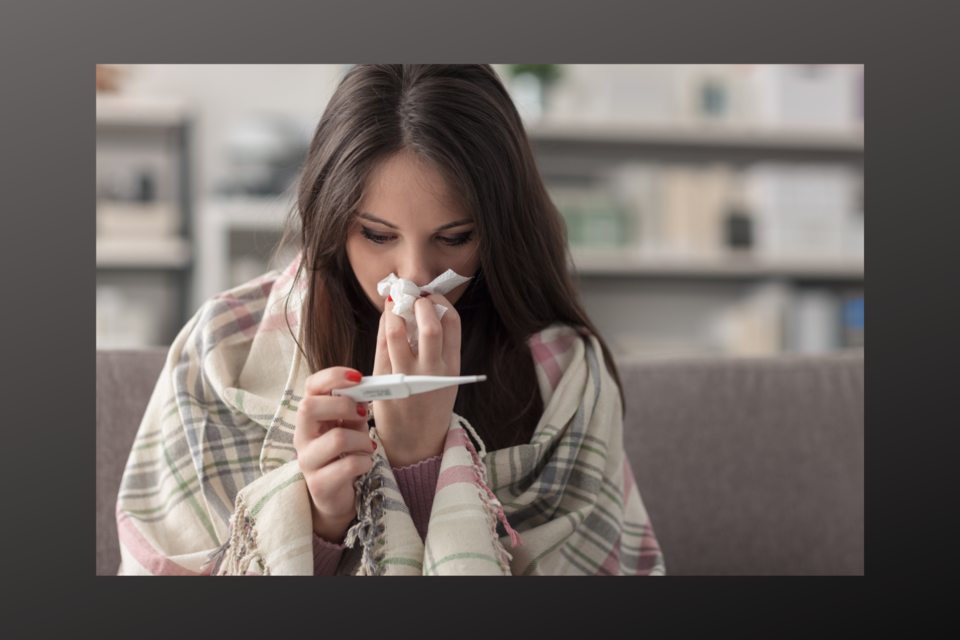Every year, respiratory viruses such as COVID-19, influenza (flu), and respiratory syncytial virus (RSV) cause hundreds of thousands of hospitalizations and thousands of deaths during the fall and winter virus season.
Most commonly, COVID-19, flu, and RSV are spread through droplets from coughing and sneezing. They can also spread by touching surfaces or objects that have virus particles on them, and then touching your mouth, nose, or eyes.
Signs and Symptoms
COVID-19, flu, and RSV share many common symptoms; however, some symptoms might occur more frequently in one virus than others. Common symptoms can include:
 |
 |
 |
 |
 |
| Fever or Chills | Cough | Muscle or Body Aches |
Congestion or Runny Nose |
Headache |
 |
 |
 |
 |
 |
| Sore Throat | Sneezing | Tiredness or Fatigue |
Shortness of Breath or Wheezing | Loss of Taste or Smell |
Other symptoms may include nausea, vomiting, or diarrhea.
Immunizations for Respiratory Viruses
Stay a step ahead of COVID-19, flu, and RSV by getting vaccinated! Vaccination is a proven, safe, and effective way to reduce severe illness and hospitalizations.
Please see the table below for immunization guidance this fall and winter. Some people are at higher risk for severe illness from respiratory viruses. Guidance for at-risk individuals can be found under the Additional Resources section.
Adult and childhood immunizations are available on a walk-in basis at all local county health departments in the Southeast Health District. For additional questions, please call 1(855)473-4374.
Other Prevention Methods
In addition to vaccination, there are several other preventative measures you can take to lower your chances of catching or spreading a respiratory virus.
 |
Cover your cough/sneeze |  |
Clean/Disinfect surfaces often | ||
 |
Wash your hands regularly |  |
Stay home if you are sick | ||
 |
Wear a face covering |  |
Practice social distancing | ||





